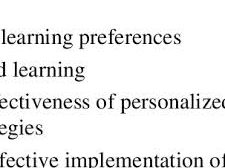Introduction: Your vehicle’s windscreen is not just a piece of glass—it’s a crucial safety component that provides protection from the elements, ensures clear visibility, and contributes to the structural integrity of the vehicle. However, accidents, weather conditions, and other unforeseen circumstances can lead to the need for windscreen replacement. In this guide, we’ll walk you through the ins and outs of windscreen replacement, from recognizing the signs to choosing the right service provider and ensuring a smooth replacement process.
- Signs Your Windscreen Needs Replacement:
- Cracks and Chips: Small cracks and chips can compromise the integrity of the windscreen over time, obstructing your view and potentially spreading.
- Extensive Damage: Large cracks or shattered glass due to accidents or severe weather can make your windscreen unsafe and in need of immediate replacement.
- Impaired Visibility: Scratches, cloudiness, or distortion can hinder your ability to see clearly, especially during nighttime or in harsh sunlight.
- Choosing the Right Replacement Service:
- Certified Professionals: Opt for experienced and certified auto glass technicians who adhere to safety standards and have a track record of quality work.
- Quality Materials: Ensure the service provider uses high-quality OEM (Original Equipment Manufacturer) or OEE (Original Equipment Equivalent) glass to maintain safety and visibility.
- Warranty: A reputable service provider should offer a warranty on both their workmanship and the glass itself.
- The Replacement Process:
- Assessment: The technician will evaluate the extent of damage to determine if repair is possible or if a full replacement is needed.
- Removal: The old windscreen is carefully removed, taking precautions to avoid damage to the surrounding frame.
- Preparation: The frame is cleaned, and new adhesive is applied to ensure a secure fit for the new windscreen.
- Installation: The new windscreen is carefully placed and aligned, and any necessary adjustments are made.
- Curing Time: The adhesive needs time to cure, so follow the recommended waiting period before driving.
- Post-Replacement Care:
- Avoid Extreme Temperatures: In the first 24-48 hours after replacement, avoid exposing the vehicle to extreme temperatures that might affect the adhesive’s curing process.
- Gentle Cleaning: Wait a few days before washing the vehicle to allow the adhesive to fully set.
- Regular Inspections: Check for any unusual noises, leaks, or improper fittings in the days following the replacement.
- Insurance Coverage and Costs:
- Coverage: Many insurance policies cover windscreen replacement, so check your policy and contact your provider to understand your coverage.
- Deductibles: Depending on your policy, you might need to cover a deductible before your insurance kicks in.
- Cost Considerations: Factors such as the type of vehicle, the extent of damage, and the quality of glass used can influence the overall cost.



